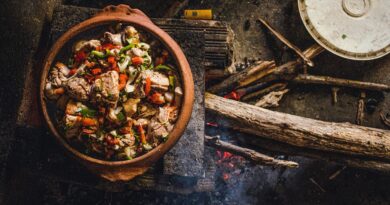Are there any specific tools or utensils needed for clay cooking?
Cooking with clay pots doesn’t require many specialized tools or utensils, but there are a few items that can be helpful for a successful clay cooking experience. Here are some tools and utensils you may find useful when cooking with clay:
1. Clay Pot or Cookware:
The most essential item for clay cooking is, of course, the clay pot or cookware itself. Choose a clay pot that suits your cooking needs and is suitable for the type of dishes you want to prepare.
2. Heat Source:
Depending on the type of clay pot you have, you may need a suitable heat source. For stovetop clay pots, you’ll need a gas or electric stove. For clay cookware designed for ovens, you’ll need access to an oven.
3. Lid or Cover:
Many clay pots come with lids or covers, but if your pot doesn’t have one, consider using a heatproof plate or foil to cover the pot during cooking to trap heat and moisture.
4. Seasoning Tools:
If you have unglazed clay cookware, you’ll need tools for seasoning the pot, such as a cloth for oiling the pot’s interior and a dish for heating the oil.
5. Long-Handled Spoon or Ladle:
A long-handled spoon or ladle can help you stir and serve dishes from deep clay pots without getting too close to the heat source.
6. Heatproof Gloves or Mitts:
When handling hot clay pots or lids, heatproof gloves or mitts are essential to protect your hands from burns.
7. Trivets or Pot Holders:
Trivets or pot holders can protect your tabletop or countertop from the hot bottom of a clay pot when you’re serving directly from the pot.
8. Tongs:
Tongs can be useful for handling and turning ingredients, such as meats or vegetables, inside the clay pot.
9. Oven Mitts or Potholders:
If you’re using clay cookware in the oven, you’ll need oven mitts or potholders for safely removing the hot cookware from the oven.
10. Cleaning Supplies:
You’ll need standard cleaning supplies such as a sponge, mild dish soap, and warm water to clean your clay pots after use. Be gentle when cleaning unglazed clay cookware to avoid damaging the porous surface.
11. Storage Containers:
If you have leftovers from your clay cooking, storage containers can help keep your dishes fresh. Opt for airtight containers to maintain the flavors and moisture of your clay-cooked dishes.
Remember to follow the care and maintenance instructions provided by the manufacturer for your specific clay cookware. With the right tools and utensils, you can enjoy the unique flavors and benefits of clay cooking while ensuring a safe and enjoyable culinary experience.



